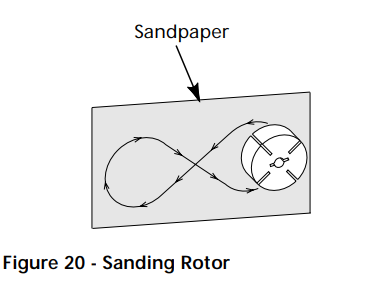
Dayton 3VG79 Portable Forced Air Heater
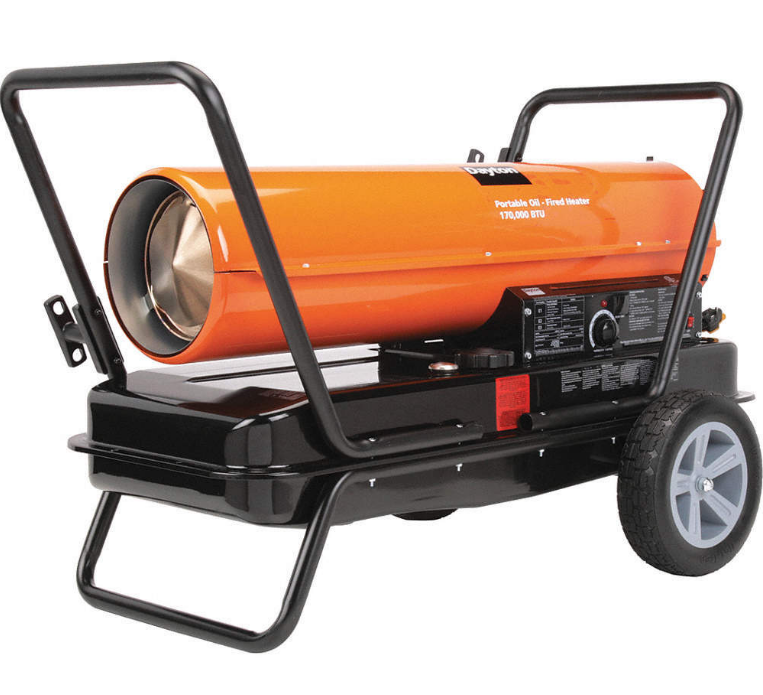
Product Identification
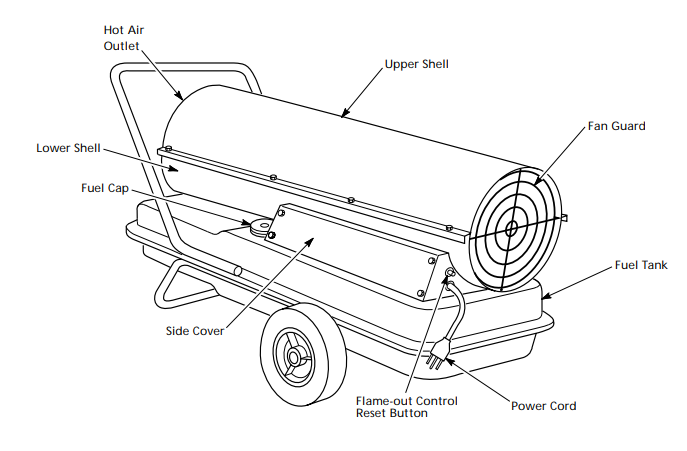
General Safety Information
Make certain you read and understand all warnings. Keep these instructions for reference. They are your guide to the safe and proper operation of this heater. Safety information appears throughout these instructions. Please pay close attention to them. Below are definitions for the safety information listed throughout this manual.
![]() DANGER: Under this heading, installation, operating, and maintenance procedures or practices will be found that, if not carefully followed, WILL result in IMMEDIATE serious personal injury or death.
DANGER: Under this heading, installation, operating, and maintenance procedures or practices will be found that, if not carefully followed, WILL result in IMMEDIATE serious personal injury or death.
![]() WARNING: Under this heading, installation, operating, and maintenance procedures or practices will be found that, if not carefully followed, COULD result in severe personal injury or death.
WARNING: Under this heading, installation, operating, and maintenance procedures or practices will be found that, if not carefully followed, COULD result in severe personal injury or death.
![]() CAUTION: Under this heading, installation, operating, and maintenance procedures or practices will be found that, if not carefully followed, COULD result in minor personal injury, product, or property damage.
CAUTION: Under this heading, installation, operating, and maintenance procedures or practices will be found that, if not carefully followed, COULD result in minor personal injury, product, or property damage.
IMPORTANT: Every possible circumstance that might involve a hazard cannot be anticipated. The warnings in this manual and on tags or decals affixed to the unit are therefore not all-inclusive. If a procedure, work method, or operating technique not specifically recommended by Dayton is used, ensure that you and others. You should also ensure that equipment will not be damaged or made unsafe by the operating or maintenance method you choose.
![]() DANGER: Carbon monoxide poisoning may lead to death!
DANGER: Carbon monoxide poisoning may lead to death!
Carbon monoxide poisoning: Early signs of carbon monoxide poisoning resemble the flu, with headaches, dizziness, and or nausea. If you have these signs, the heater may not be working properly. Get fresh air at once! Have the heater serviced. Some people are more affected by carbon monoxide than others. These include pregnant women, people with heart or lung disease or anemia, those under the influence of alcohol, and those at high altitudes.
![]() WARNING: Improper use of this heater can cause serious injury or death from burns, fire, explosion, electrical shock, and carbon monoxide poisoning.
WARNING: Improper use of this heater can cause serious injury or death from burns, fire, explosion, electrical shock, and carbon monoxide poisoning.
Make certain you read and understand all warnings. Keep these instructions for reference. They are your guide to the safe and proper operation of this heater.
![]() WARNING: Use only kerosene or No. 1 fuel oil to avoid risk of fire or explosion. Never use gasoline, naphtha, paint thinners, alcohol, or other highly flammable fuels.
WARNING: Use only kerosene or No. 1 fuel oil to avoid risk of fire or explosion. Never use gasoline, naphtha, paint thinners, alcohol, or other highly flammable fuels.
- Fueling
- Personnel involved with fueling shall be qualified and thoroughly familiar with the manufacturer’s instructions and applicable federal, state, and local regulations regarding the safe fueling of heating units.
- Only the type of fuel specified on the heater’s data plate shall be used.
- All flames, including the pilot light, if any, shall be extinguished and the heater allowed to cool before fueling.
- During fueling, all fuel lines and fuel-line connections shall be inspected for leaks. Any leaks shall be repaired before returning the heater to service.
- At no time shall more than one day’s supply of heater fuel be stored inside a building in the vicinity of the heater. Bulk fuel storage shall be outside the structure.
- All fuel storage shall be located a minimum of 25 feet from heaters, torches, welding equipment, and similar sources of ignition (exception: the fuel reservoir integral with the heater unit).
- Whenever possible, fuel storage shall be confined to areas where floor penetrations do not permit fuel to drip onto or be ignited by a fire at a lower elevation.
- Fuel storage shall be in accordance with the federal, state, or local authority having jurisdiction.
- Never use a heater where gasoline, paint thinner, or other highly flammable vapors are present.
- Follow all local ordinances and codes when using the heater.
- Heaters used in the vicinity of tarpaulins, canvas, or similar enclosure materials shall be located a safe distance from such materials. The recommended minimum safe distance is 10 feet. It is further recommended that these enclosure materials be of a fire-retardant nature. These enclosure materials shall be securely fastened to prevent them from igniting or from upsetting the heater due to wind action.
- Use only in well-vented areas. Provide at least three square feet of fresh, outside air for each 100,000 Btu/Hr of rating. This heater produces carbon monoxide, which is listed by the State of California as a reproductive toxin under Proposition 65.
- Use only in places free of flammable vapors or high dust content.
- Use only with the electrical voltage and frequency specified on the model plate.
- Use only a three-prong, grounded extension cord.
- Minimum heater clearances from combustibles:
Outlet: 8 Ft. Sides: 4 Ft.
Top: 4 Ft. Rear: 4 Ft. - Locate the heater on a stable and level surface, where hot or running water or a fire may occur.
- When moving or storing a heater, keep the heater in a level position, or fuel spillage may occur.
- Keep children and animals away from the heater.
- Unplug the heater when not in use.
- When used with a thermostat, the heater may start at any time.
- Never use a heater in living or sleeping areas.
- Never block the air inlet (rear) or the air outlet (front) of the heater.
- Never move, handle, refuel, or service a hot, operating, or plugged-in heater.
- Never attach ductwork to the front or rear of the heater.
Theory of Operation
The Fuel System
The air pump forces air through the air line. The air is then pushed through the burner head nozzle. This air causes fuel to lift from the tank. A fine mist of fuel is sprayed into the combustion chamber.
The Air System
The motor turns the fan. The fan pushes air into and around the combustion chamber. This air is heated and provides a stream of clean, hot air.
The Ignition System
The electronic ignitor sends voltage to the spark plug. The spark plug ignites the fuel and air mixture.
The Flame-out Control System
This system causes the heater to shut down if the flame goes out.
Fuels
![]() WARNING: Use only kerosene or No. 1 fuel oil to avoid risk of fire or explosion. Never use gasoline, naphtha, paint thinners, alcohol, or other highly flammable fuels.
WARNING: Use only kerosene or No. 1 fuel oil to avoid risk of fire or explosion. Never use gasoline, naphtha, paint thinners, alcohol, or other highly flammable fuels.
Do not use heavy fuels such as No. 2 fuel oil or No. 2 Diesel. Using heavy fuels will result in:
- clogged fuel filter and nozzle
- carbon buildup on the spark plug
- The need for a nontoxic anti-icer in fuel during very cold weather
IMPORTANT: Use a KEROSENE ONLY container. Be sure the storage container is clean. Foreign matter, such as rust, dirt, or water, will cause the flame-out control to shut down the heater. Foreign matter may also require you to clean the fuel system often.
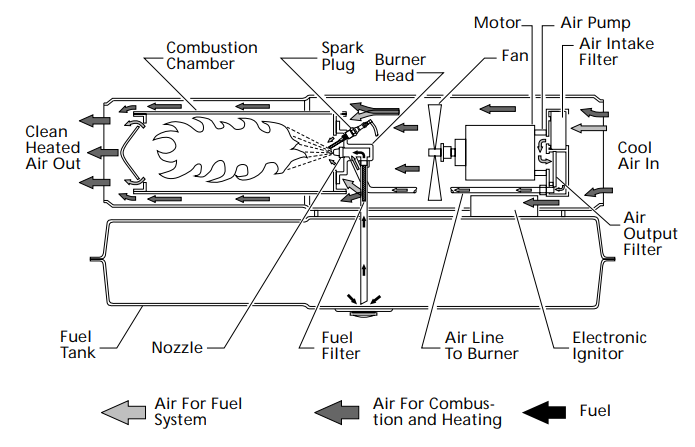
Assembly
This model is furnished with wheels and handles. Wheels, handles, and the mounting hardware are found in the shipping carton.
TOOLS NEEDED
- Medium Phillips Screwdriver
- 3/8″ Open or Adjustable Wrench
- Hammer
- Slide the axle through the wheel support frame. Install wheels on the axle.
IMPORTANT: When installing wheels, point the extended hub of the wheels toward the wheel support frame (See Figure 4).
- Place cap nuts on axle ends. Gently tap with a hammer to secure.
- Place the heater on the wheel support frame. Make sure the air inlet end (rear) of the heater is over the wheels. Line up the holes on the fuel tank flange with the holes on the wheel support frame.
- Place handles on top of the fuel tank flange. Insert screws through the handles, fuel tank flange, and wheel support frame. Attach the nut finger-tight after each screw is inserted.
- After all screws are inserted, tighten nuts firmly.
Ventilation
Follow the minimum fresh, outside air ventilation requirements. If proper, fresh outside air ventilation is not provided, carbon monoxide poisoning can occur. Provide proper fresh, outside air ventilation before running the heater.
FRESH AIR OPENING REQUIREMENTS

Provide at least a three-square-foot opening of fresh, outside air for each 100,000 Btu/Hr rating. Provide extra fresh air if more heaters are being used.
Example: A 200,000 Btu/Hr heater requires one of the following:
- a two-car garage door (16 feet wide opening) raised five inches
- a single-car garage door (9 feet wide opening) raised eight inches
- two windows (30 inches wide opening) raised fifteen inches
Operation
![]() WARNING: Review and understand the warnings in the Safety Information Section. They are needed to safely operate this heater. Follow all local codes when using this heater.
WARNING: Review and understand the warnings in the Safety Information Section. They are needed to safely operate this heater. Follow all local codes when using this heater.
TO START THE HEATER
- Follow all ventilation and safety information.
- Fill the fuel tank with kerosene or No. 1 fuel oil.
- Attach the fuel cap.
- Plug the power cord of the heater into a three-prong, grounded extension cord. The extension cord must be at least six feet long.
EXTENSION CORD WIRE SIZE REQUIREMENTS- 6 to 10 feet long, use 18 AWG-rated cord
- 11 to 100 feet long, use a 16 AWG-rated cord
- 101 to 200 feet long, use a 14 AWG-rated cord
- Plug extension cord into a standard 120-volt/60-hertz, three-hole, grounded outlet. The heater will start when the extension cord is plugged into the outlet. If not, push in flameout control reset button (See Figure 5).

TO STOP THE HEATER
- Unplug the extension cord from the outlet.
TO RESTART THE HEATER
- Wait two minutes after stopping the heater.
- Repeat steps under To Start Heater.
Maintenance
![]() WARNING: Never service the heater while it is plugged in, operating, or hot. Severe burns and electrical shock can occur.
WARNING: Never service the heater while it is plugged in, operating, or hot. Severe burns and electrical shock can occur.
UPPER SHELL REMOVAL
- Remove screws along each side and top of the heater using a 5/16″ nut-driver. These screws attach the upper and lower shells (See Figure 6).
- Lift the upper shell off.
- Remove the fan guard.
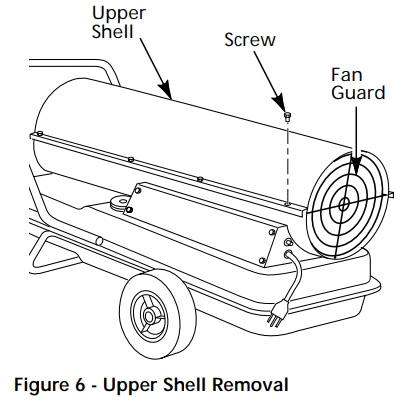
FAN
IMPORTANT: Remove the fan from the motor shaft before removing the motor from the heater. The weight of the motor resting on the fan could damage the fan pitch.
- Remove upper shell (See Figure 6).
- Use a 1/8″ allen wrench to loosen the setscrew that holds the fan to the motor shaft.
- Slip the fan off the motor shaft.
- Clean the fan using a soft cloth moistened with kerosene or solvent.
- Dry fan thoroughly.
- Replace the fan on the motor shaft. Place the fan hub flush with the end of the motor shaft (See Figure 7).

- Place the setscrew on the flat of the shaft. Tighten the setscrew firmly (40-50 inches-pounds).
- Replace the fan guard and upper shell.
AIR OUTPUT, AIR INTAKE, AND LINT FILTERS
- Remove upper shell (See Figure 6).
- Remove filter end cover screws using 5/16″ nut-driver.
- Remove the filter end cover.
- Replace air output and lint filters.
- Wash or replace air intake filter (See Preventive Maintenance Schedule, page 9).
- Replace the filter end cover.
- Replace the fan guard and upper shell.
IMPORTANT: Do not oil filters.
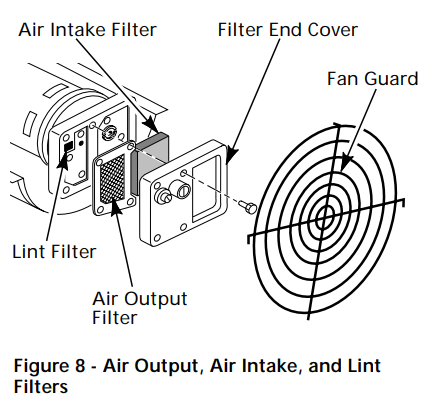
PUMP PRESSURE ADJUSTMENT
- Remove the pressure gauge plug from the filter end cover.
- Install accessory pressure gauge (part number HA1180).
- Start heater (See Operation, page 5). Allow the motor to reach full speed.
- Adjust pressure to 6.0 PSI. Turn the relief valve to the right to increase pressure. Turn the valve to the left to decrease pressure (See Figure 10, page 7).
- Stop the heater. Remove the pressure gauge. Replace the pressure gauge plug-in filter end cover.
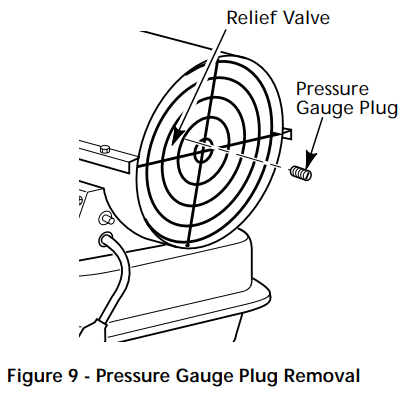
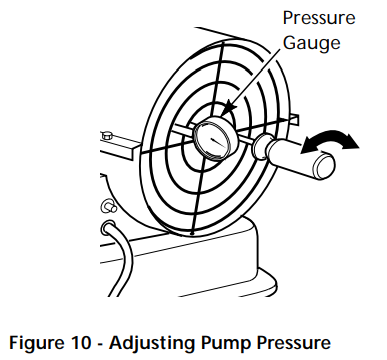
FUEL FILTER
- Remove side cover screws using a 5/16″ nut-driver.
- Remove the side cover (See Figure 11).
- Pull the lower fuel line off the fuel valve fitting.
- Carefully pry the bushing, lower fuel line, and fuel filter out of the fuel tank.
- Wash the fuel filter with clean fuel and replace it in the tank.
- Attach the lower fuel line to the fuel valve fitting.
- Replace the side cover.
FUEL VALVE
- Remove side cover (See Figure 11), fan guard, and upper shell (See Figure 6, page 6) screws using 5/16″ nut-driver.
- Remove fan (See Fan, page 6).
- Pull the lower fuel line off the fuel valve fitting (See Figure 12).

 WARNING: High Voltage
WARNING: High Voltage - Disconnect 3 electrical wires from fuel valve. Note the location of the green ground wire (See Figure 12).
- Using a 1/4″ nut driver, remove 2 screws holding the fuel valve and bracket to the lower shell (See Figure 12). Save these screws.
- Using a 1/4″ nut driver, remove 2 screws holding the fuel valve to the bracket. Save these screws.

- Attach the new fuel valve to the bracket with 2 existing screws.
- Install the new fuel valve and bracket on the lower shell.
- Connect the wiring and upper and lower fuel lines to the fuel valve. Make sure the green ground wire is connected to the correct terminal (See Figure 12).
- Replace the fan, fan guard, upper shell, and side cover.
SPARK PLUG
- Remove upper shell (See Figure 6, page 6).
- Remove fan (See page 6).
- Remove the spark plug wire from the spark plug.

- Remove spark plug and wave spring washer from burner head using 13/16″ open-end wrench.
- Clean and regap spark plug electrodes to .110 gap.

- Install the spark plug and the wave spring washer in the burner head. Torque 40 to 60 inch-pounds. Then adjust (if necessary) to bring the side electrode into the acceptable range (See Figure 15).

- Attach the spark plug wire to the spark plug.
- Replace fan (See page 6).
- Replace the fan guard and upper shell.
NOZZLE
- Remove upper shell (See page 6).
- Remove fan (See page 6).
- Remove fuel and air line hoses from the burner head.
- Remove the spark plug wire from the spark plug.
- Remove spark plug from burner head using 13/16″ open-end wrench.
- Remove three screws using a 5/16″ nutdriver and remove the burner head from the combustion chamber.

- Place the burner head into the vise and lightly tighten.
- Carefully remove nozzle from burner head using 5/8″ socket wrench (See Figure 17).

- Blow compressed air through the face of the nozzle. This will free any dirt in the nozzle area.
- Inspect the nozzle seal for damage.
- Replace the nozzle into the burner head and tighten firmly (80-110 inch-pounds).
- Attach the burner head to the combustion chamber.
- Install the spark plug in the burner head.
- Attach the spark plug wire to the spark plug.
- Attach fuel and airline hoses to the burner head.
- Replace fan (See page 6).
- Replace the fan guard and upper shell.
PUMP ROTOR
(Procedure if rotor is binding)
- Remove upper shell (See page 6).
- Remove filter end cover screws using 5/16″ nut-driver.
- Remove the filter end cover and air filters.
- Remove pump plate screws using a 5/16″ nut-driver.

- Remove the pump plate.
- Remove rotor, insert, and blades.
- Check for debris in the pump. If debris is found, blow out with compressed air.
- Install the insert and rotor.
- Check the gap on the rotor. Adjust to .003″/.004″ if needed (See Figure 19).
 NOTE: Rotate rotor one full turn to ensure the gap is .003″/.004″ at the tightest position. Adjust if needed.
NOTE: Rotate rotor one full turn to ensure the gap is .003″/.004″ at the tightest position. Adjust if needed. - Install blades, pump plate, air filters, and filter end cover.
- Replace the fan guard and upper shell.
- Adjust pump pressure (See page 16).
NOTE: If the rotor is still binding, proceed as follows. - Perform steps 1 through 6 above.
- Place fine-grade sandpaper (600 grit) on a flat surface. Sand rotor lightly in “figure 8” motion four times (See Figure 19).

- Reinstall the insert and rotor.
- Perform steps 10 through 12 above.
STORING, TRANSPORTING, OR SHIPPING
NOTE: If shipping, transport companies require fuel tanks to be empty.
- Drain the fuel tank.
NOTE: This model has a drain plug on the underside of the fuel tank. Remove the drain plug to drain all fuel. Be sure all fuel is removed. - Replace the drain plug.
- If any debris is noted in old fuel, add 1 or 2 quarts of clean kerosene to the tank, stir, and drain again. This will prevent excess debris from clogging filters during future use.
- Replace the fuel cap and the drain plug. Properly dispose of old and dirty fuel. Check with local automotive service stations that recycle oil.
- If storing, store the heater in a dry place. Make sure the storage place is free of dust and corrosive fumes.
IMPORTANT: Do not store kerosene over the summer months for use during the next heating season. Using old fuel could damage the heater.
Preventative Maintenance Schedule
![]() WARNING: Never service the heater while it is plugged in, operating, or hot. Severe burns and electrical shock can occur.
WARNING: Never service the heater while it is plugged in, operating, or hot. Severe burns and electrical shock can occur.

Troubleshooting Chart
![]() WARNING: Never service the heater while it is plugged in, operating, or hot. Severe burns and electrical shock can occur.
WARNING: Never service the heater while it is plugged in, operating, or hot. Severe burns and electrical shock can occur.

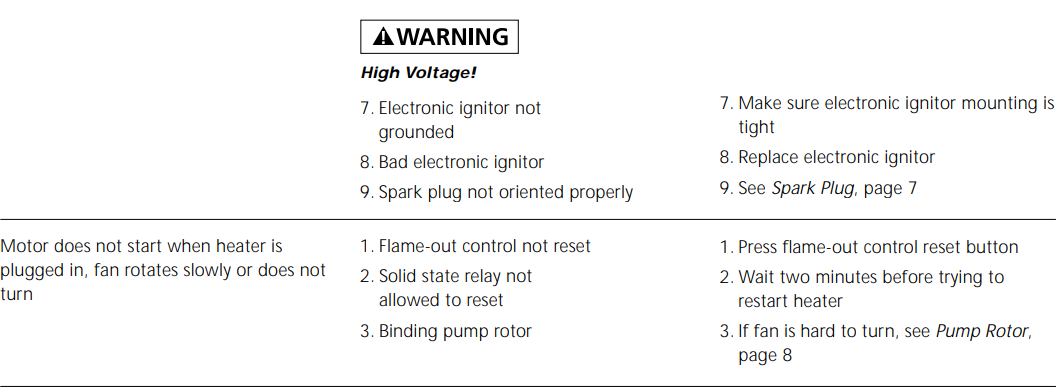
For more manuals by Dayton, visit ManualsLibraryy
Dayton 3VG79 Portable Forced Air Heater- FAQs
Q1. How do I turn on the Dayton 3VG79 heater?
Plug the unit into a proper power outlet, ensure the fuel supply is connected, then switch the power button on. Adjust the thermostat or control knob to the desired heat setting.
Q2. How long can I leave a portable heater on?
It’s best to limit use to 4–6 hours at a time. Avoid running it continuously overnight unless using the lowest setting and proper safety precautions.
Q3. Why is my forced air heater not producing heat?
Common causes include clogged filters, blocked air vents, low fuel supply, or faulty wiring. Check and clean filters, inspect the fuel system, and verify power connections.
Q4. What should I do before turning the heater on for the first time in the season?
Replace or clean filters, clear any obstructions from vents, inspect fuel lines, test the carbon monoxide detector, and run a short test cycle.
Q5. Is it safe to sleep with a portable heater on?
No, it is not recommended. Even with safety features, leaving a heater unattended while sleeping increases the risk of fire or overheating.
Q6. Can a portable heater run continuously?
Most heaters are not designed for nonstop use. They should be operated in intervals and allowed to cool down to prevent overheating and fire hazards.
Q7. What is the ideal temperature setting for a portable heater?
A setting around 68°F (20°C) is recommended to stay comfortable while saving energy.
Q8. What safety rules should I follow with this heater?
Keep it at least 3 feet away from flammable objects, plug directly into a wall outlet (not an extension cord), and never leave it running unattended.
Q9. How many watts does the Dayton 3VG79 use?
Portable forced air heaters typically operate between 1500–2000 watts, depending on the model and heat setting.

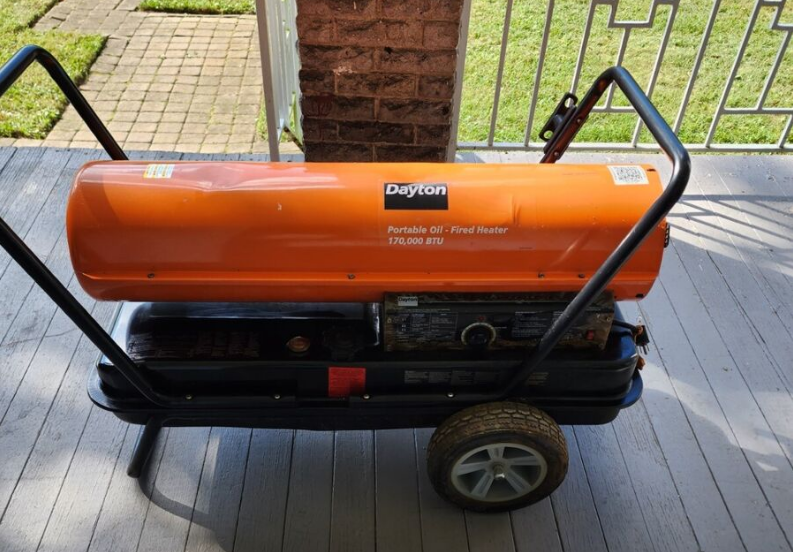

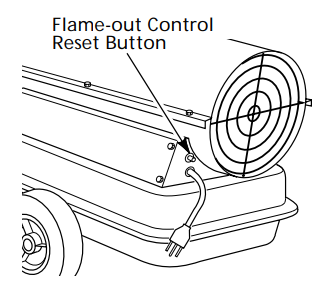
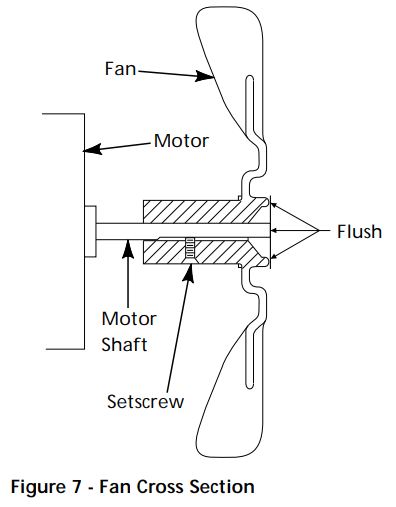
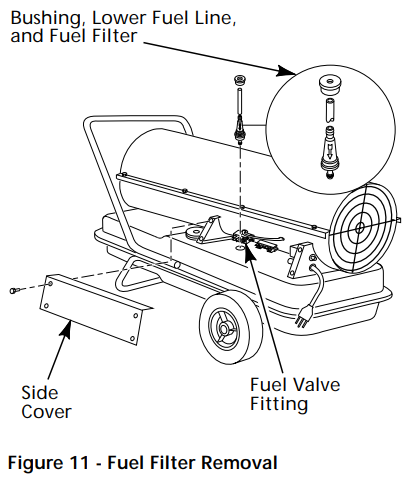
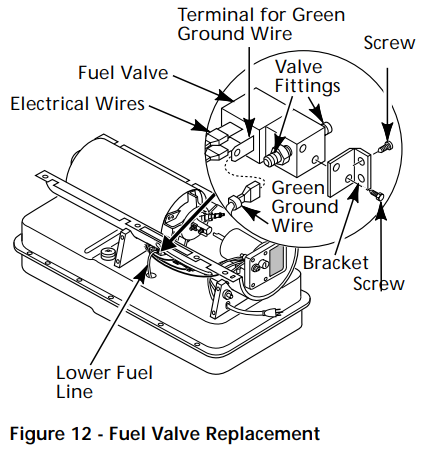

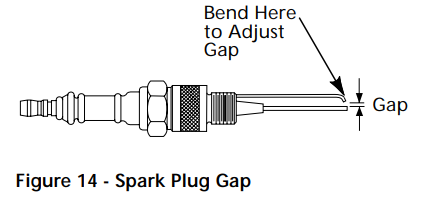
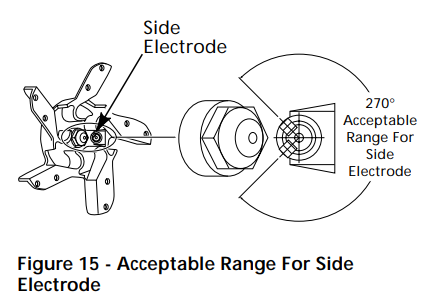
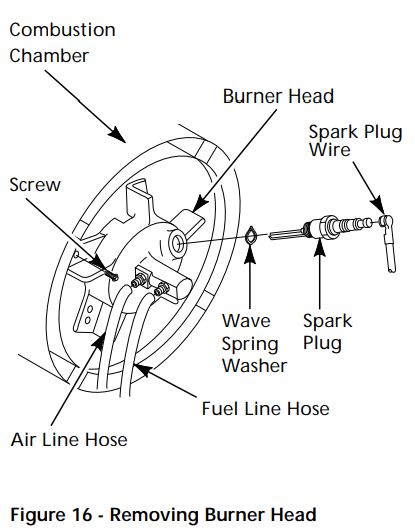
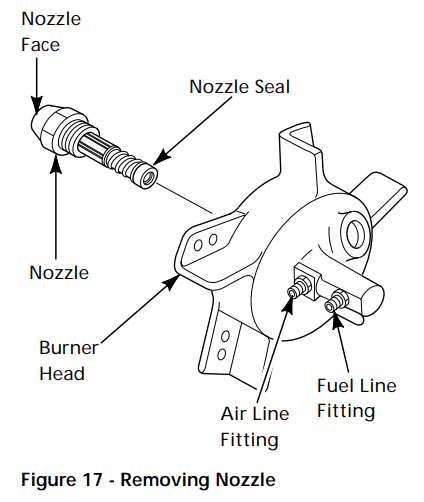
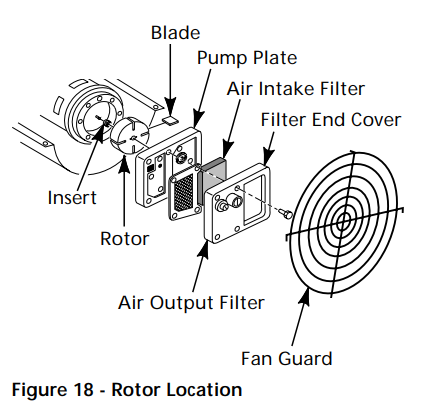
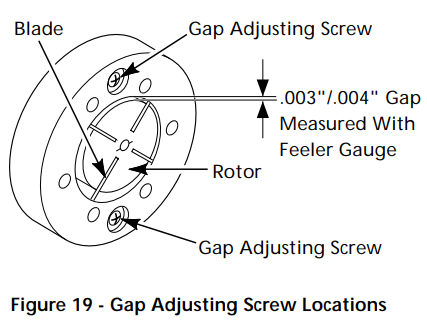 NOTE: Rotate rotor one full turn to ensure the gap is .003″/.004″ at the tightest position. Adjust if needed.
NOTE: Rotate rotor one full turn to ensure the gap is .003″/.004″ at the tightest position. Adjust if needed.